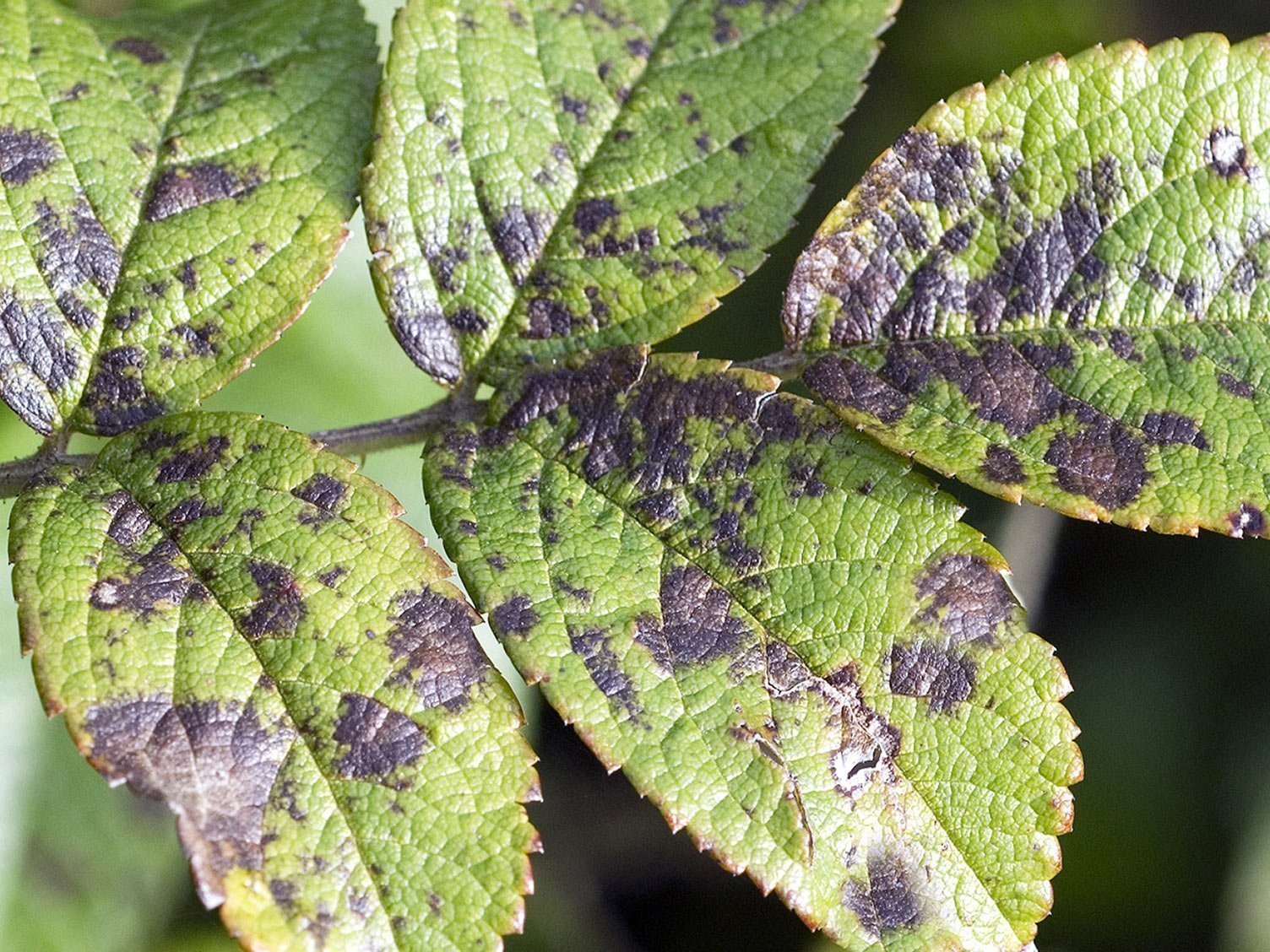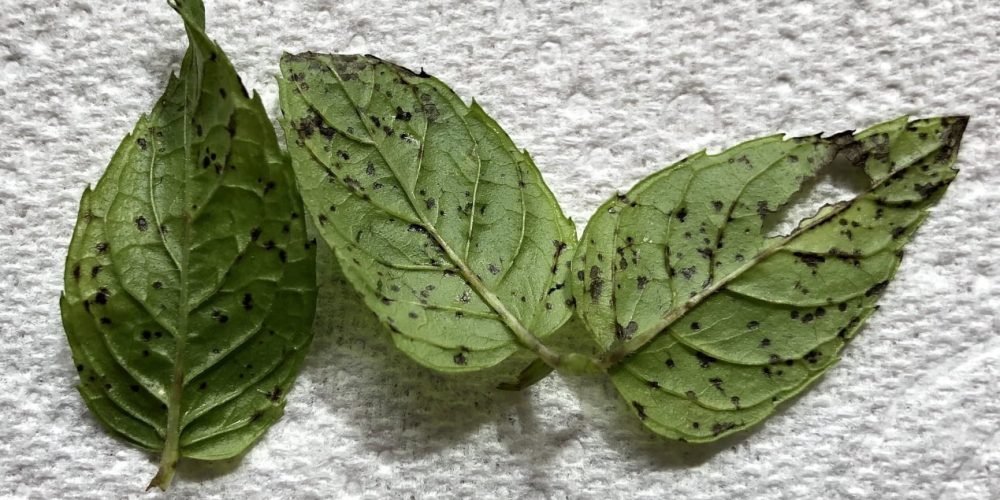Causes of black spots on mint leaves
There are many reasons that may lead to the appearance of black spots on mint leaves, the most important of which are:
Excessive watering: If mint is watered with large amounts of water frequently, this may lead to the appearance of black spots on the leaves.
High humidity: If the air humidity levels where mint is grown are very high, this can lead to the appearance of black spots on the leaves.
Fungal infection: Mint leaves may be infected with some fungi that lead to the appearance of black spots on them.
Exposure to direct sunlight: If mint leaves are exposed to direct sunlight for long periods, especially in the summer, this can lead to the appearance of black spots on them.
To avoid the appearance of black spots on mint leaves, care must be taken to provide appropriate humidity and ventilation to the place where it is planted, avoid excessive watering, and make sure to obtain good quality of the cultivated plants.
Black spots on mint leaves may be the result of fungal or bacterial diseases or fungal spores.
These spots may appear because the plant is exposed to excess moisture or because the plant is not ventilated adequately. These spots can be dangerous and affect plant growth and production.
Diseases can be treated by maintaining the quality of soil and water and ensuring good ventilation for the plant.
Insecticides available in local markets can also be used based on the recommendations of agricultural specialists.
Causes and methods of treating black spots on mint leaves
Black spots on mint leaves can be caused by several factors, including:
- Black mold: This is a type of mold that causes black color on the leaves and spreads in humid climates.
- Irregular plant care: Plants that do not receive adequate care can be susceptible to many diseases, including black spot.
- High presence of insects: Insects can carry diseases and infections to plants, leading to the appearance of black spots.
To treat this condition, the following steps can be followed:
- Remove and dispose of leaves affected by black spots.
- Plant the plant in a place with good ventilation and natural lighting.
- Reduce excess moisture, and make sure to use irrigation at a rate that helps keep the plant hydrated without excessive moisture.
- Spraying insecticides on plants to reduce the spread of diseases and insects.
- Natural preparations such as essential oils, salt, and vinegar can be used to treat plants affected by black spot.
- An agricultural specialist can be consulted to determine which of the previously mentioned factors are affecting the plant, and to take the necessary measures to avoid black spot outbreaks in the future.

Ideal growing conditions for mint leaves
Mint needs a mild and humid environment to grow. If you grow mint in the ground, you will need to ensure that the appropriate soil that mint needs is available. The soil must be rich in nutrients and well-drained.
Mint grows well in partly sunny areas and can only be exposed to direct sunlight for short periods of the day. It is important that mint receives periodic irrigation, and a sufficient level of moisture must be provided in the soil.
Also, mint can be grown in pots or containers, and the best temperatures for growing mint are between 60 and 70 degrees F (15 – 21 degrees C).
Potted mint should be kept near a partly sunny window and the plant should be watered regularly when the soil is dry.
the reviewer
https://www.dalil-ar.com/2023/05/Causes-of-black-spots-on-mint-leaves.html
https://www.hunker.com/12482178/why-is-my-mint-plant-growing-with-black-spots-on-the-leaves



